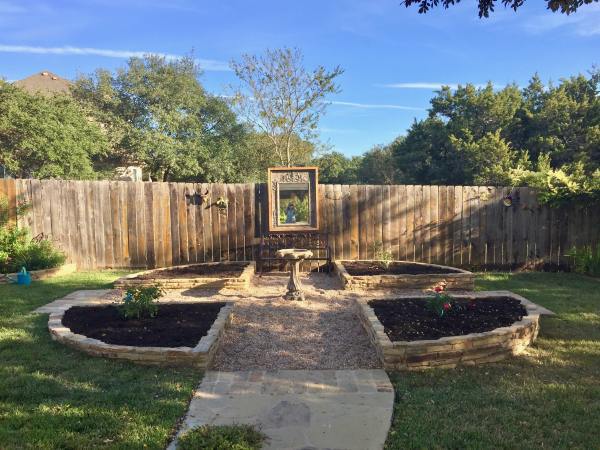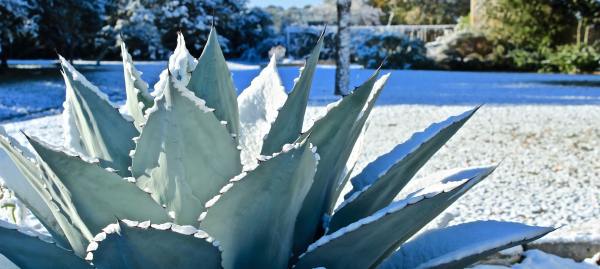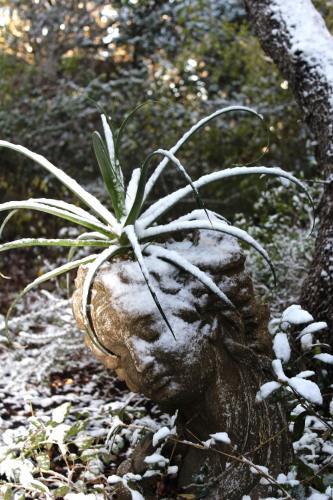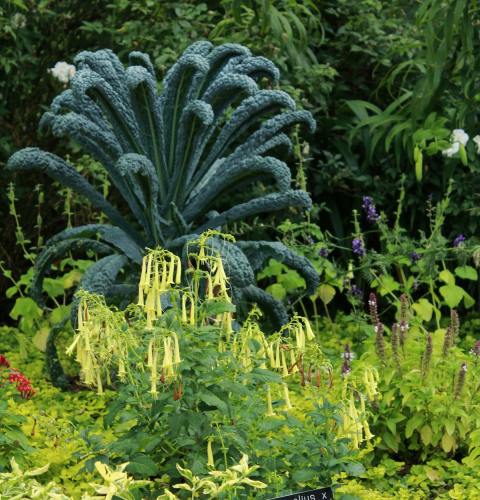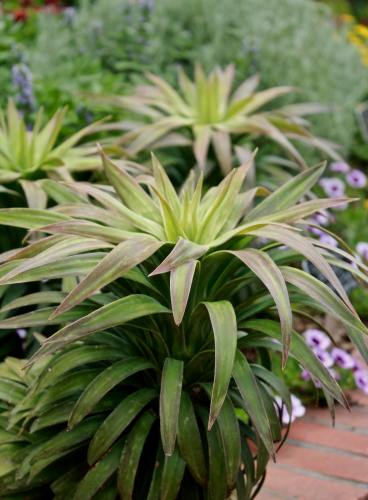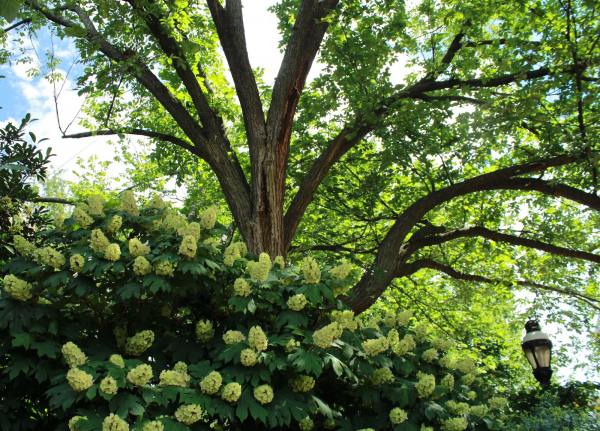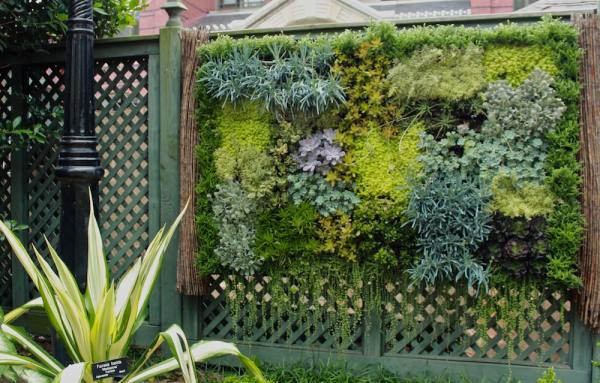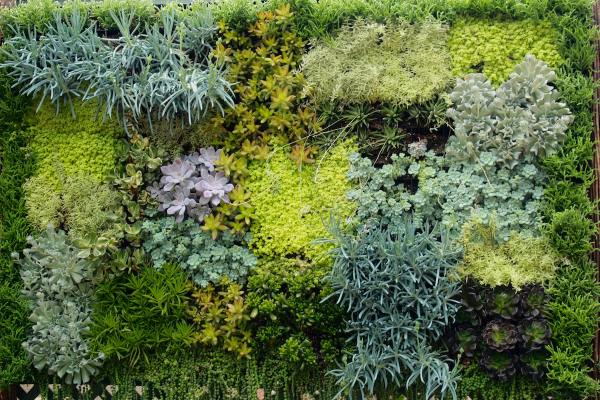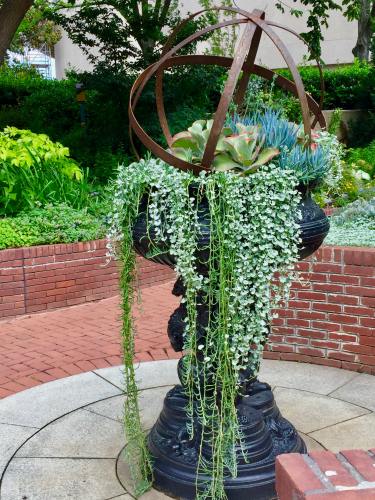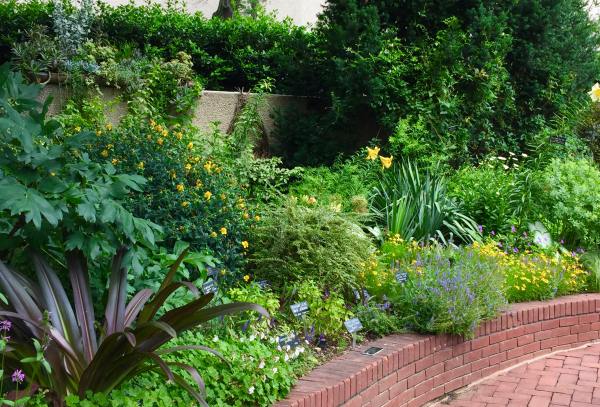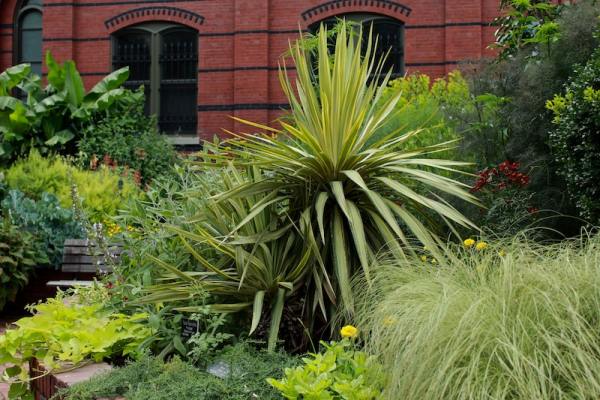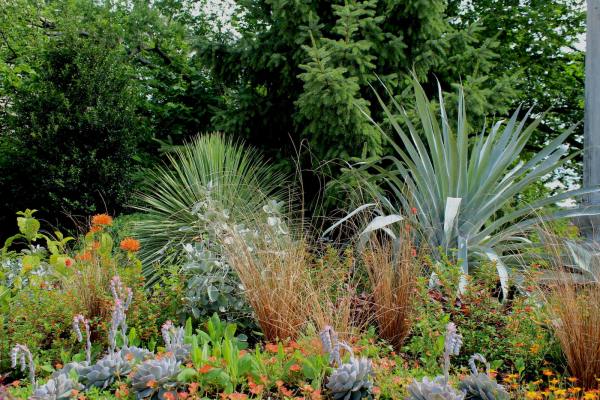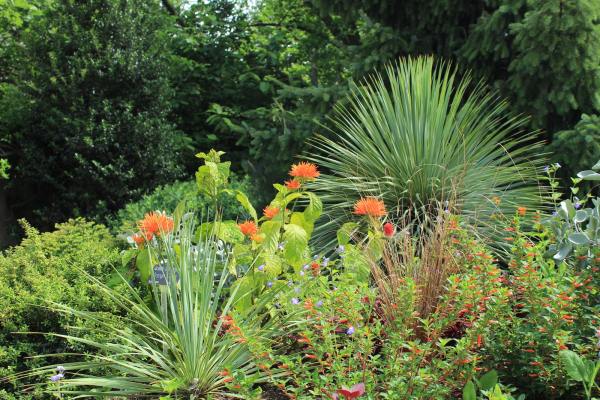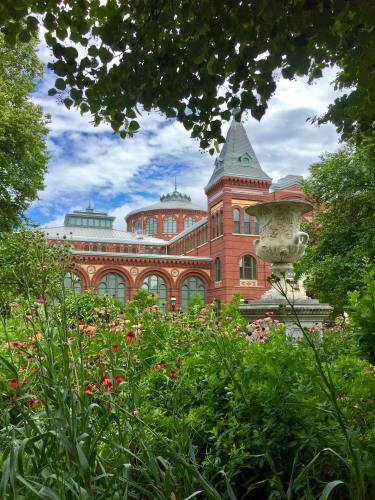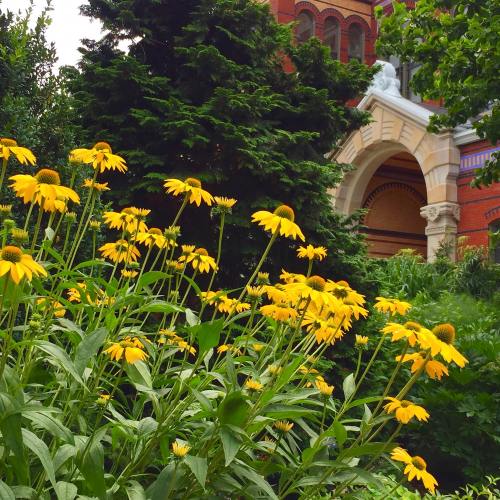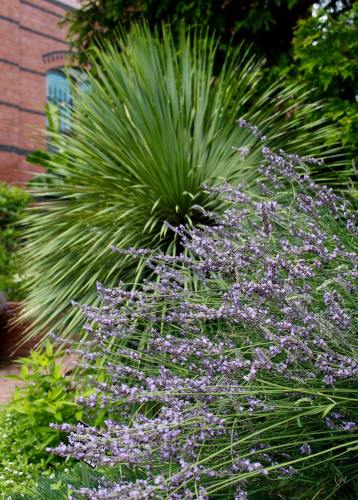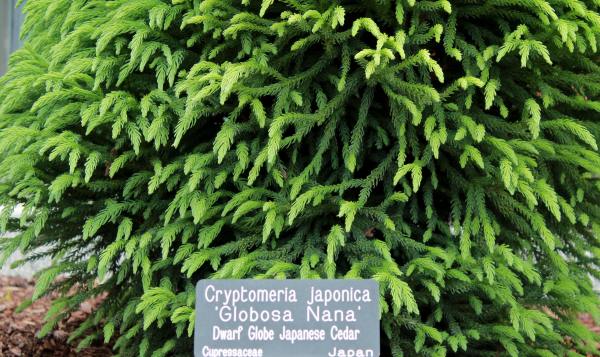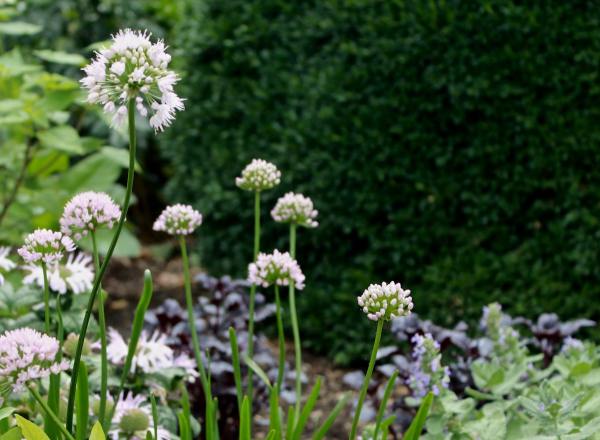Getting cozy in the greenhouse…
In Central Texas, sunny 80-degree days dance with us periodically throughout fall and winter. But, we still have to prepare for the occasional cold spell.
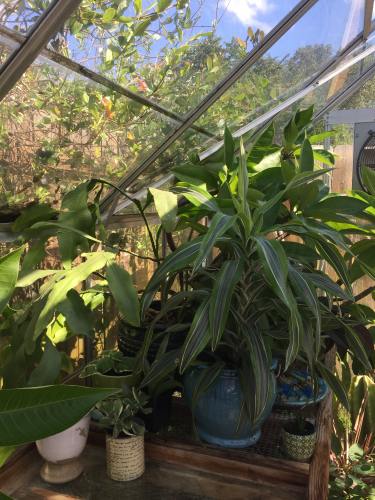 I have to be particularly careful because most of the potted plants in my collection are tropical or subtropical. The plumerias begin to wilt at close to 50, dripping and dropping yellow leaves.
I have to be particularly careful because most of the potted plants in my collection are tropical or subtropical. The plumerias begin to wilt at close to 50, dripping and dropping yellow leaves.
Two weeks ago, we prepared for a 47-degree low and all the pots were rushed into the greenhouse. (You can see more about this annual process here.)
A few of them needed haircuts to fit into their winter home and the rest were carefully nestled inside like a Tetris puzzle.
The greenhouse has to be divided to provide sun for the sun lovers and shade for the more delicate plants.
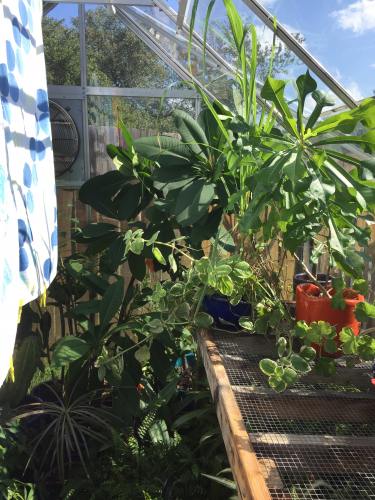
I typically drape shade cloth down the middle of the greenhouse on a shower rod on top of the ceiling supports.
But, I’d thrown out the shade cloth bits and scraps I’d cobbled together for the last few seasons and didn’t have any in time for the emergency arrival of the immigrants.
So, I improvised. Now a colorful collection of beach towels from around the world adorns the little glass house.
One is from Costa Rica and another is from a cruise Jeff and I took to Santorini, Greece in 2000. In case you were wondering, the 3rd is from Target!
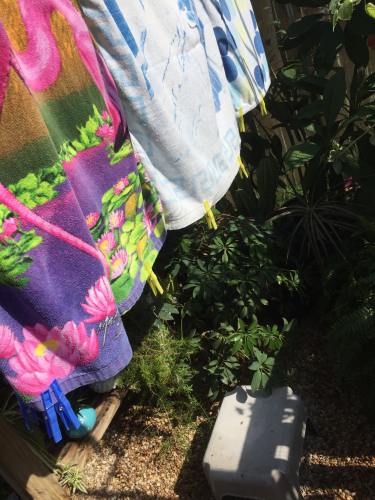 After mid-day, the plants on the east side get some much-needed shade and those on the right get to bask in the sun for the rest of the da
After mid-day, the plants on the east side get some much-needed shade and those on the right get to bask in the sun for the rest of the da
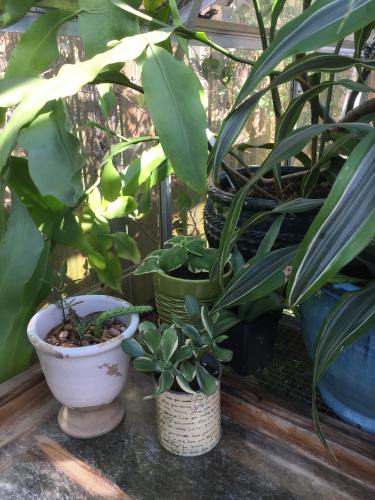 Shade lovers also get to hang out on the bottom shelves while those on the upper bunk provide cover.
Shade lovers also get to hang out on the bottom shelves while those on the upper bunk provide cover.
In close quarters, I get to enjoy the plants one-on-one through the winter. I keep the automatic heaters on when it gets below 50 to keep the tropicals happy and prevent dormancy.
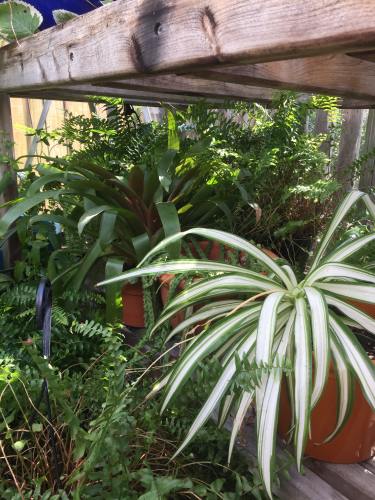 On hot days, the automatic fan turns on and I open up the 4 ceiling windows and the doors.
On hot days, the automatic fan turns on and I open up the 4 ceiling windows and the doors.
The greenhouse temperature on sunny days will get about 20 degrees higher than the outside temperature.
If it reaches more than 80 degrees outside, I wet the pea gravel floor once or twice throughout the day to help cool it down inside.
Sometimes, on a sunny-but-cold day in the dead of winter, I’ll pull in a lawn chair, turn on my iTunes, eat some lunch and soak up the sunshine for a little while.
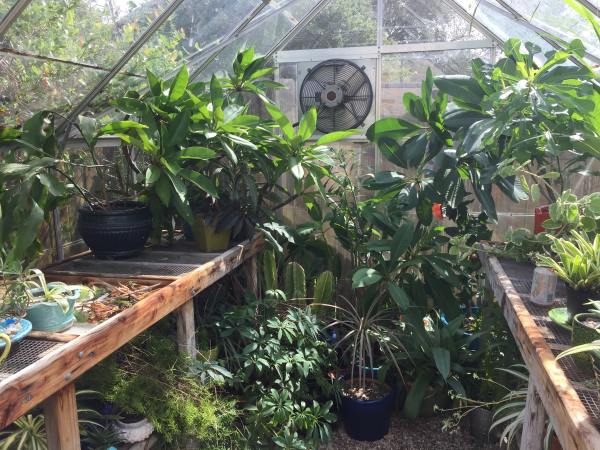
Here they are, all tucked in for the winter chill.
Can you name all the plants in this picture?
See the before pictures as we began prepping the site to install the greenhouse. I posted about it exactly ten years ago today!
Now that everyone is settled in, I’ll turn my attention to propagating, planting seeds and digging up some outdoor landscape plants to overwinter in the crystal palace.
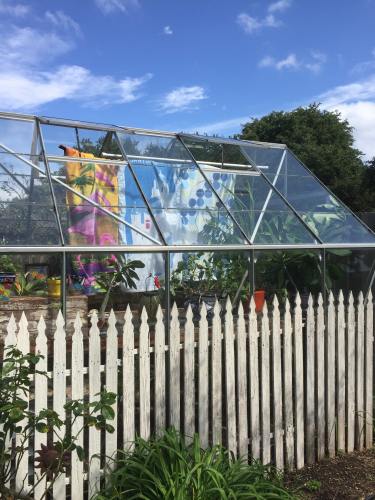 I love it when volunteer plants show up in the garden and I can pot them and keep them in the greenhouse until spring.
I love it when volunteer plants show up in the garden and I can pot them and keep them in the greenhouse until spring.
Where will your potted friends spend the winter?
How far into the moving process will you be before this comes out of your mouth?
“I’m not going to plant so many pots next year.”
Let’s just get it over with now. You say it. We all know you’re lying, because we’re telling ourselves the same lie. Just get it off your chest and embrace the obsession. You’ll feel so much better come spring!
Have yourself a happy little winter.

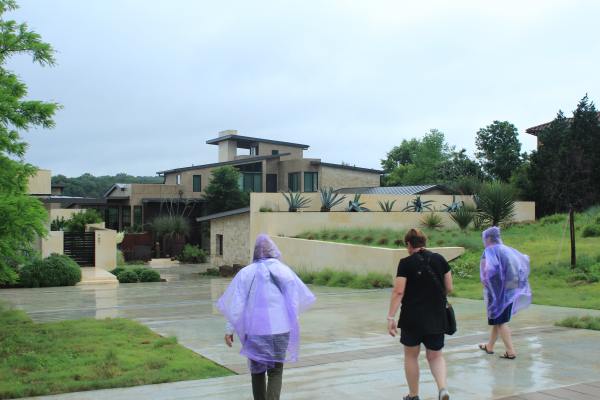 Armed with rain ponchos, 92 gardeners braved the rain, and it was well worth it.
Armed with rain ponchos, 92 gardeners braved the rain, and it was well worth it.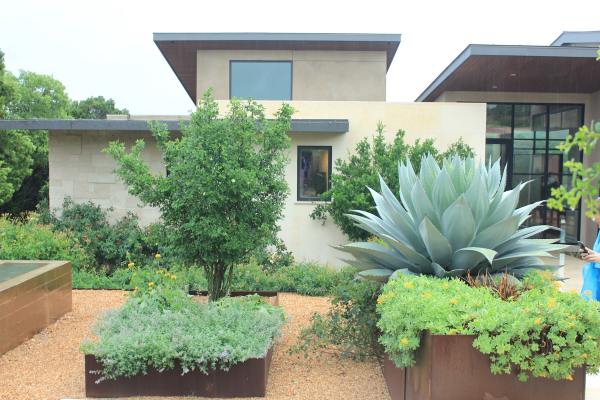
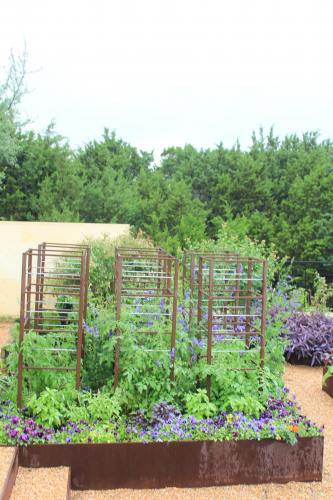
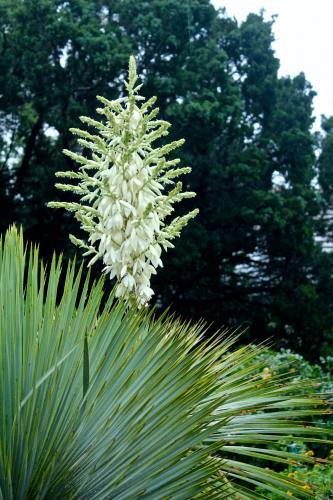
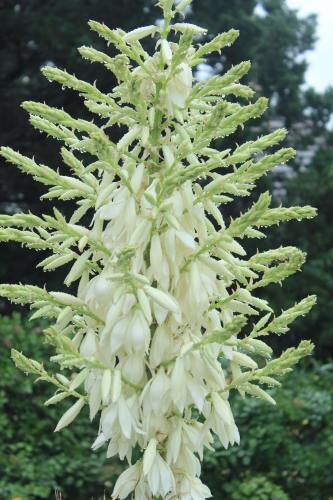
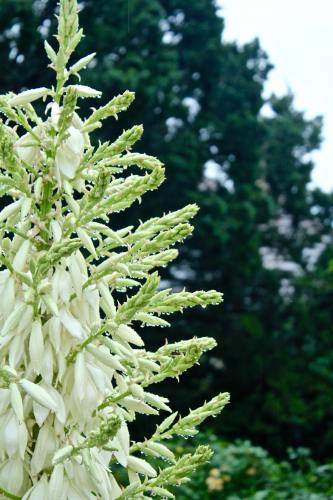
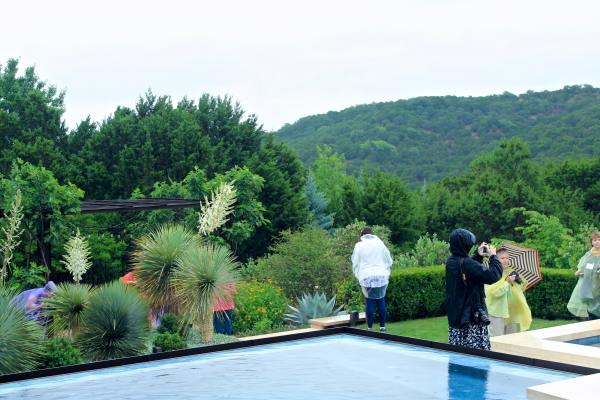
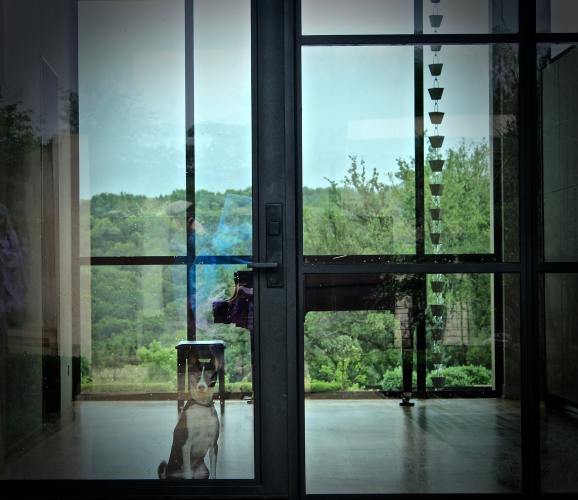
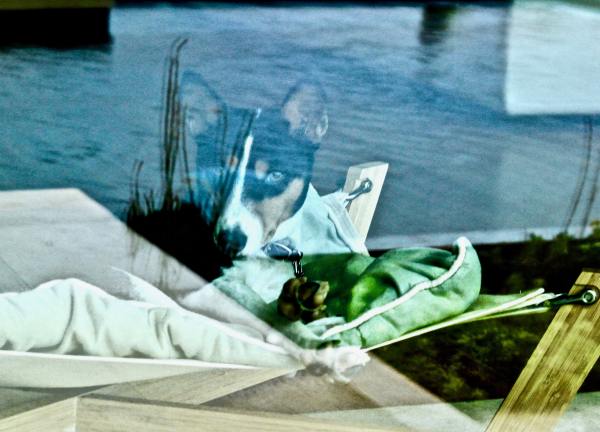
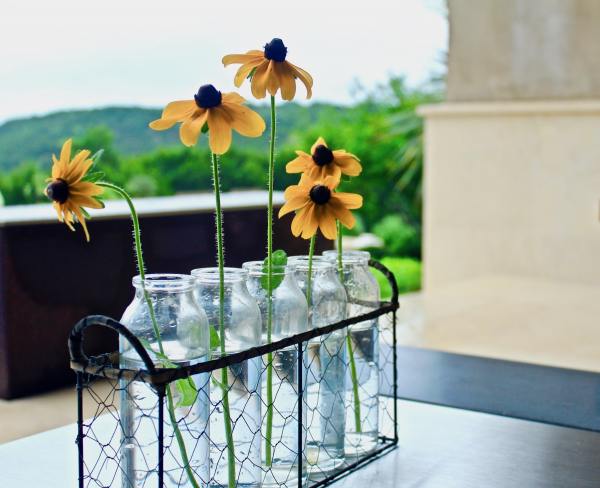
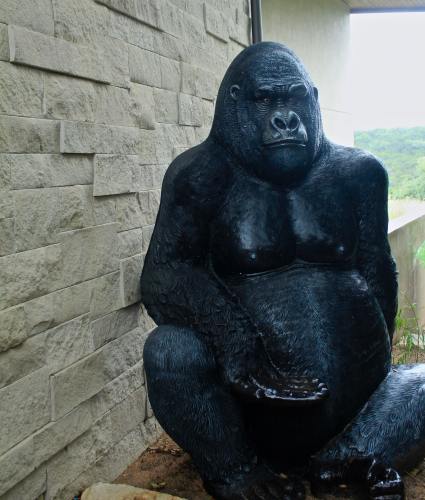
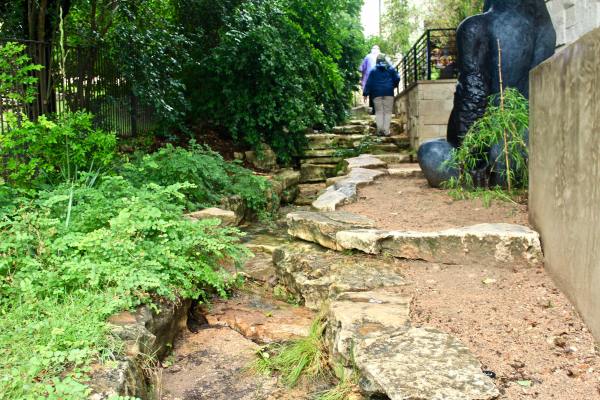
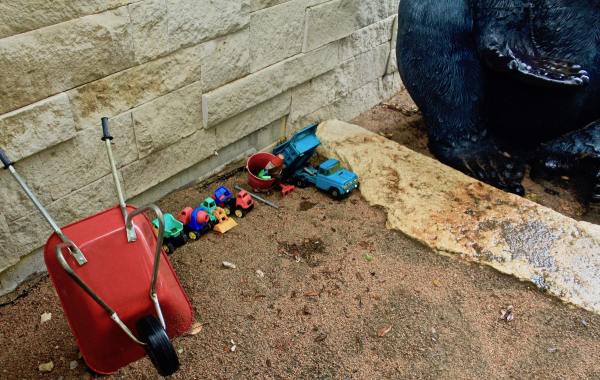
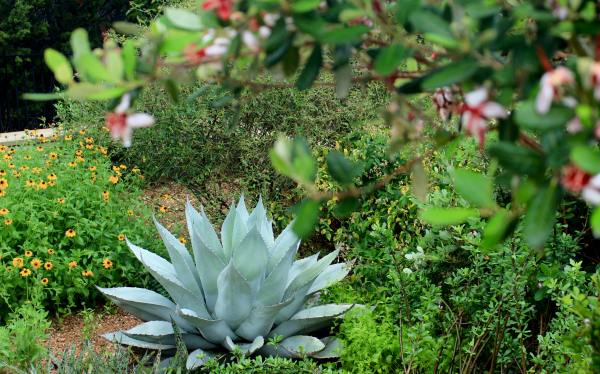
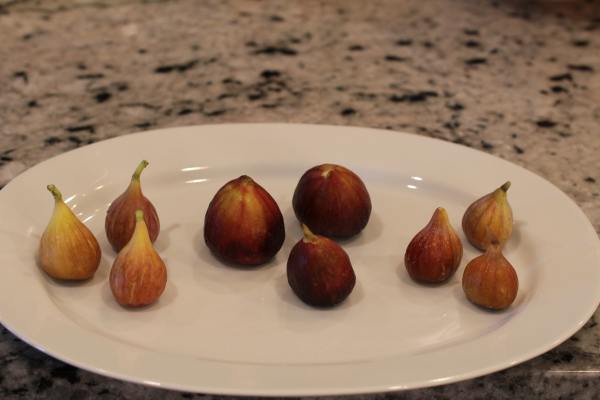 We had 2 or 3 different varieties of figs. The ones in the middle, came from my mail carrier. We talk plants periodically when I’m outside and he’s actually hopped out to take a peek at my vegetable garden. (Shhh – don’t tell anyone!) My figs aren’t ripe yet – they seem to be larger than the small ones and smaller than the large ones. I know that mine is a Brown Turkey fig tree. No idea what these were.
We had 2 or 3 different varieties of figs. The ones in the middle, came from my mail carrier. We talk plants periodically when I’m outside and he’s actually hopped out to take a peek at my vegetable garden. (Shhh – don’t tell anyone!) My figs aren’t ripe yet – they seem to be larger than the small ones and smaller than the large ones. I know that mine is a Brown Turkey fig tree. No idea what these were.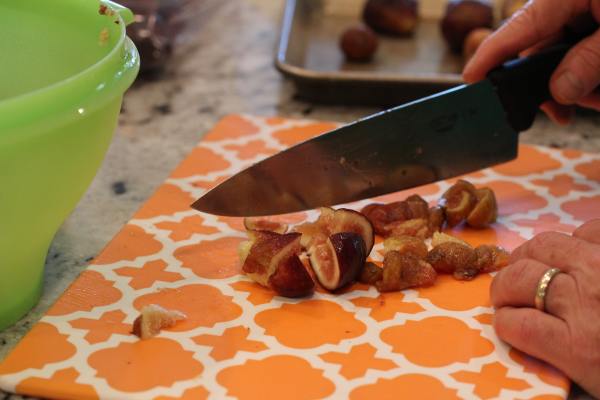 Chop, chop, chop. (It takes a lot of figs to make jam).
Chop, chop, chop. (It takes a lot of figs to make jam).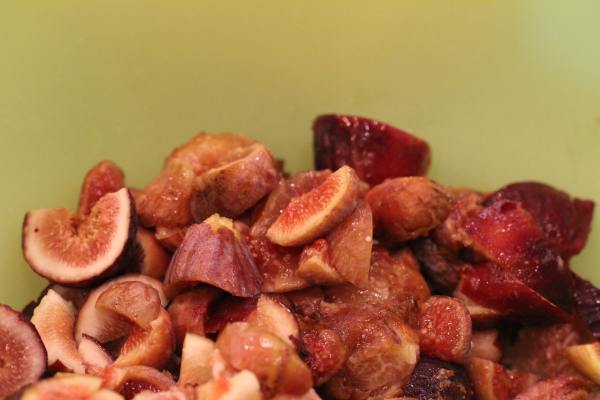
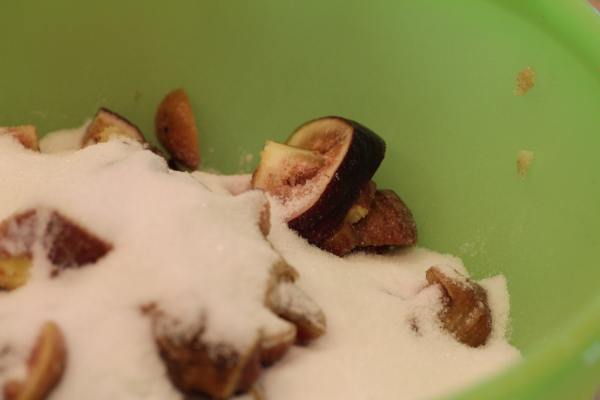 The house smelled great as they were bubbling in the pot. Mother Nature’s air freshener!
The house smelled great as they were bubbling in the pot. Mother Nature’s air freshener!
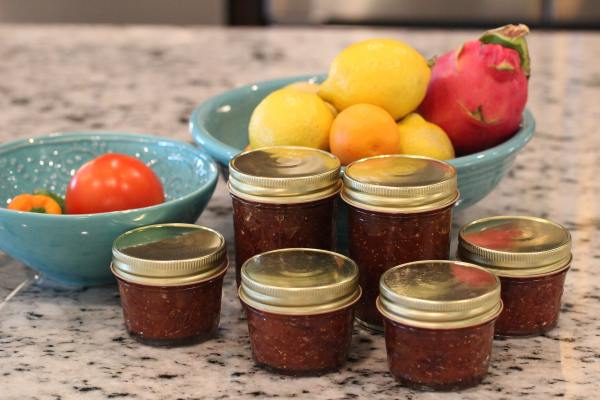 A wonderful, fresh home garden treat, we’ll be enjoying the jam this winter as well.
A wonderful, fresh home garden treat, we’ll be enjoying the jam this winter as well.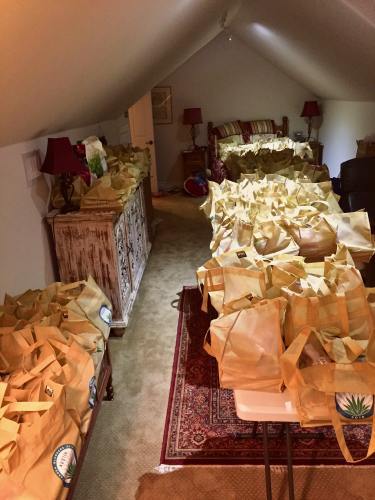
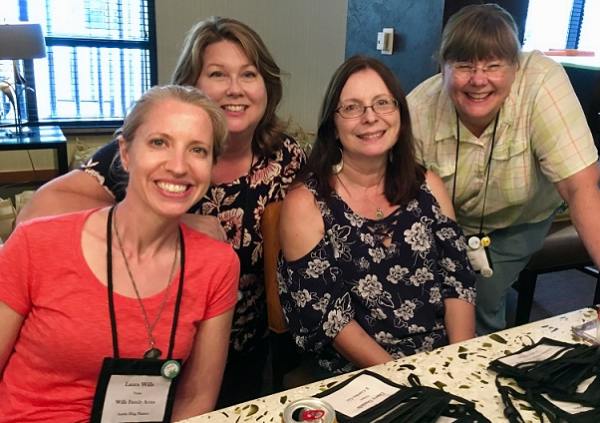


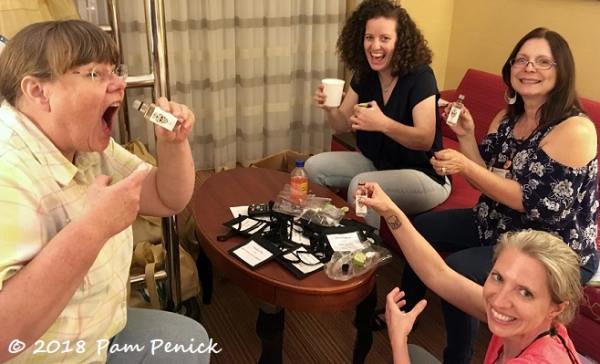
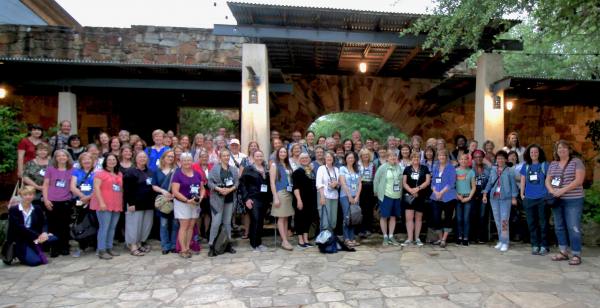
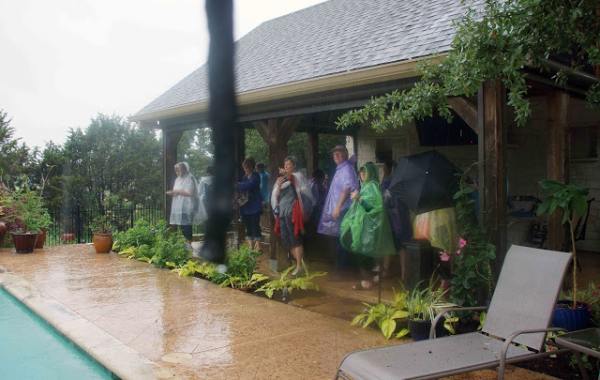 Then everyone arrived at my house. Along with the pelting rain. I opened up all blinds so they could see the garden from inside. But most ventured outside in their ponchos, seeking some shelter on the back patio, and in the covered outdoor kitchen and cabana. The brave ones continued on to see the garden, though the rain made taking quality photos difficult.
Then everyone arrived at my house. Along with the pelting rain. I opened up all blinds so they could see the garden from inside. But most ventured outside in their ponchos, seeking some shelter on the back patio, and in the covered outdoor kitchen and cabana. The brave ones continued on to see the garden, though the rain made taking quality photos difficult.

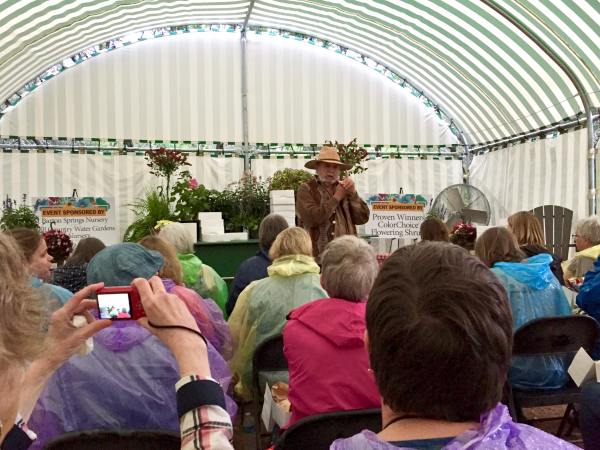
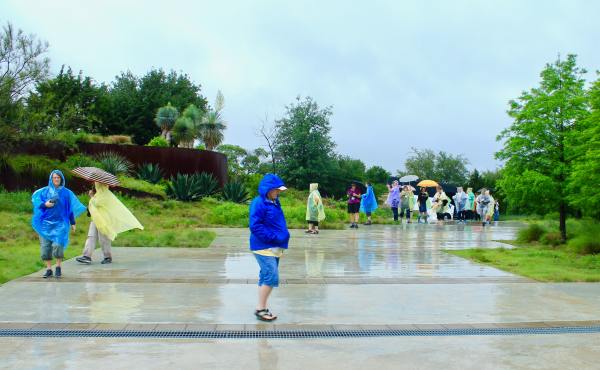
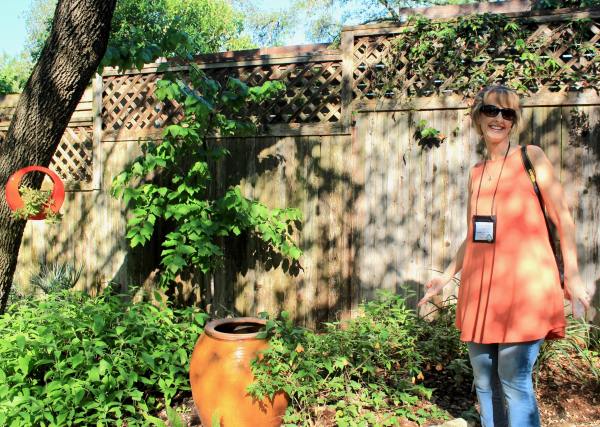
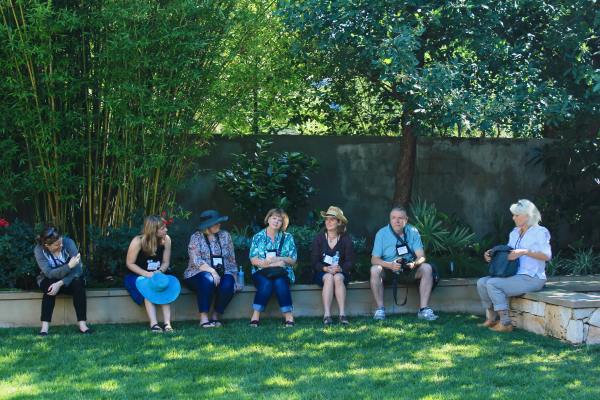
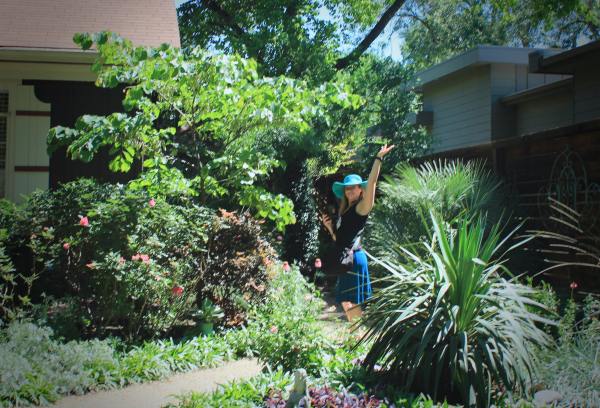
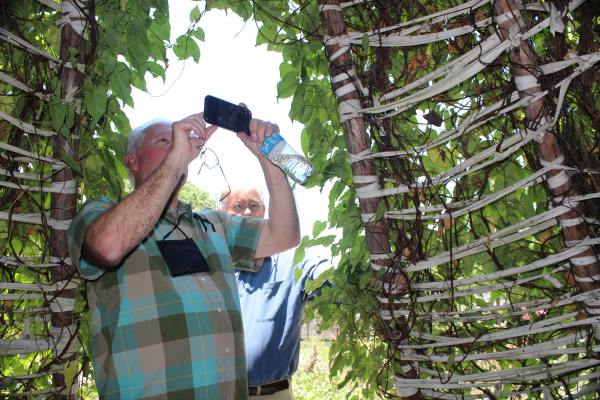
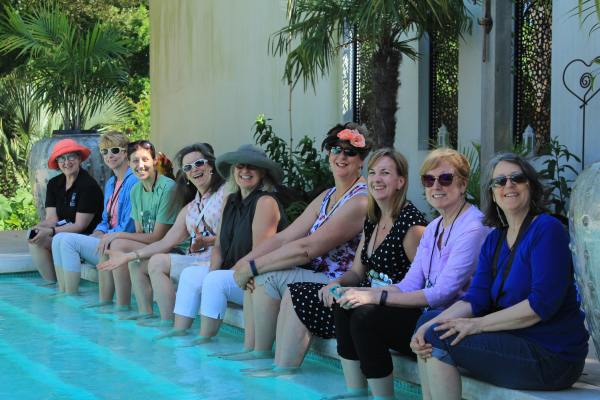
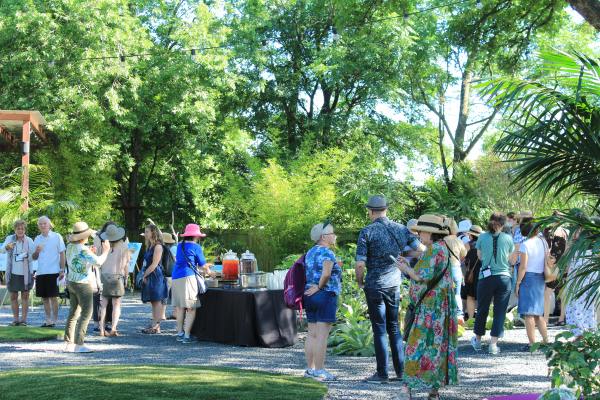
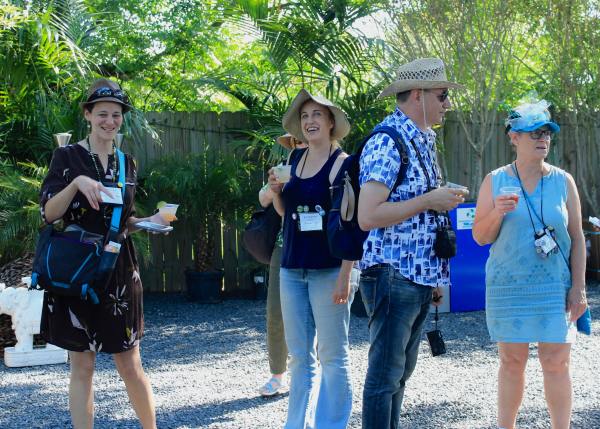 A relaxing reception at Articulture provided the perfect setting for BBQ dinner, drinks and live music. We enjoyed taste testing two tequila recipes of our dear friend and Austin icon, Lucinda Hutson. Bloggers also shopped in the store and traded impressions of the gardens. Bloggers traded contact information and started setting their sights on Denver in 2018.
A relaxing reception at Articulture provided the perfect setting for BBQ dinner, drinks and live music. We enjoyed taste testing two tequila recipes of our dear friend and Austin icon, Lucinda Hutson. Bloggers also shopped in the store and traded impressions of the gardens. Bloggers traded contact information and started setting their sights on Denver in 2018.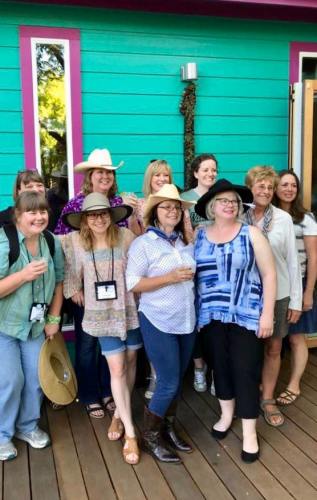
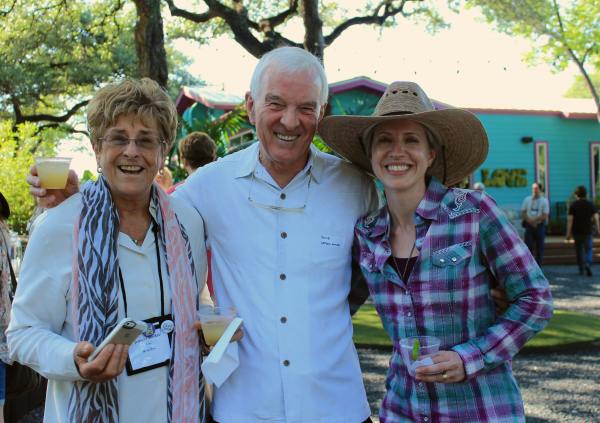 Austin bloggers, minus Laura Wills, gathered for a final photo, as Laura posed with Austin blogger Jenny Stocker and her husband.
Austin bloggers, minus Laura Wills, gathered for a final photo, as Laura posed with Austin blogger Jenny Stocker and her husband.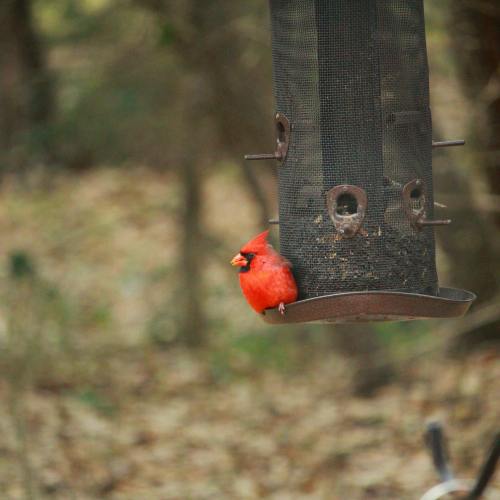
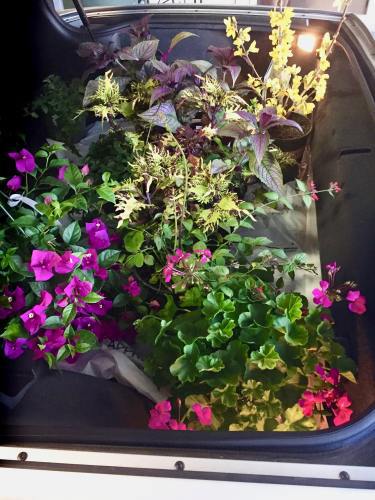
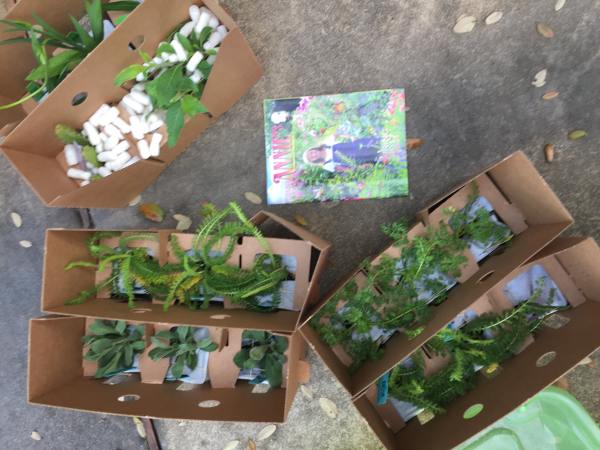
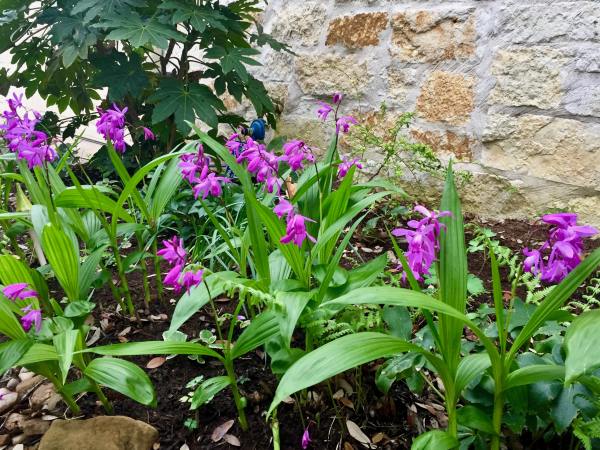
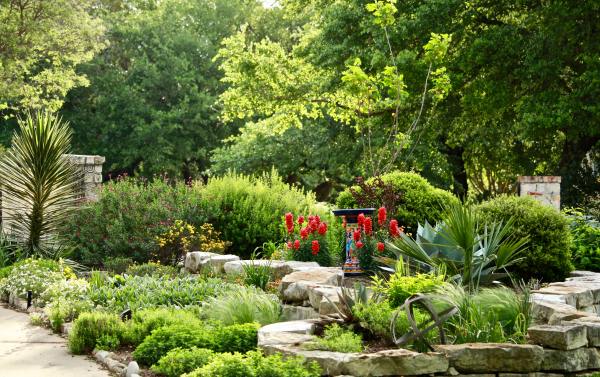
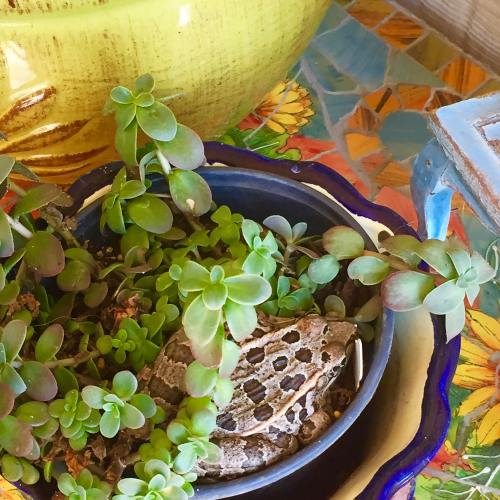
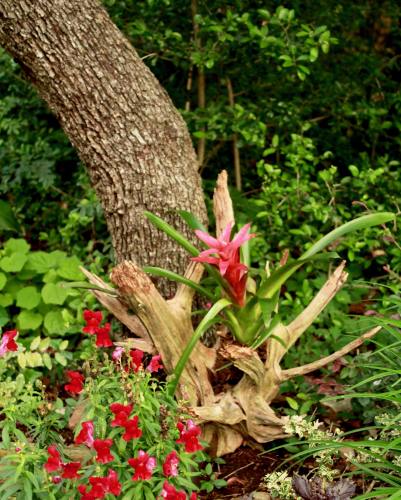
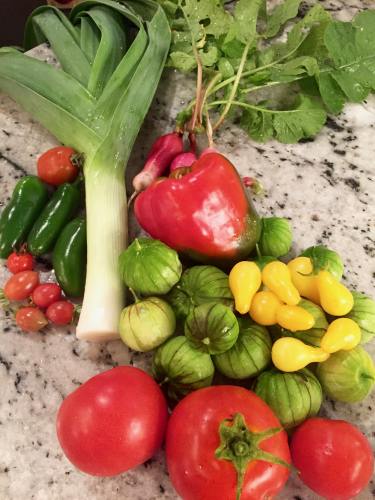 July: By now, the veggie garden provides us with an ongoing variety of great fruits and vegetables. Sadly, it is also the time for stink bugs and leaf-footed bugs to attack the tomatoes. Almost impossible to eliminate, I get depressed about the impending demise of my tomato crop. They multiply so quickly, it’s impossible to control them by hand squishing or spraying them with the hose.
July: By now, the veggie garden provides us with an ongoing variety of great fruits and vegetables. Sadly, it is also the time for stink bugs and leaf-footed bugs to attack the tomatoes. Almost impossible to eliminate, I get depressed about the impending demise of my tomato crop. They multiply so quickly, it’s impossible to control them by hand squishing or spraying them with the hose.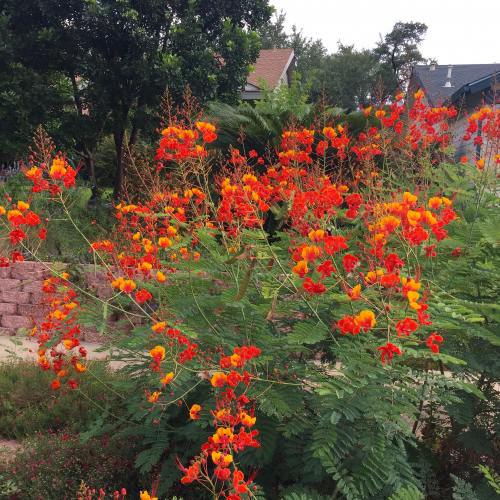
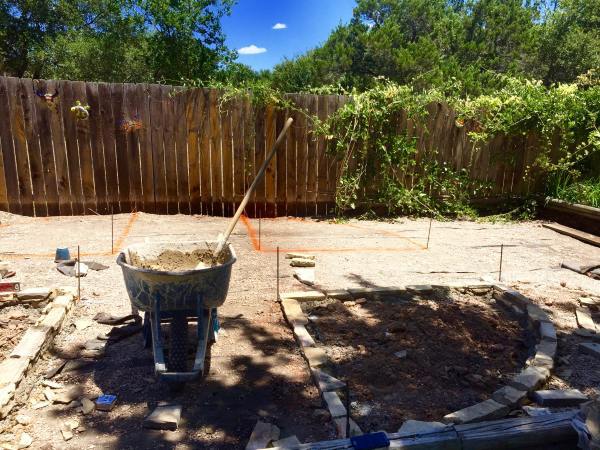
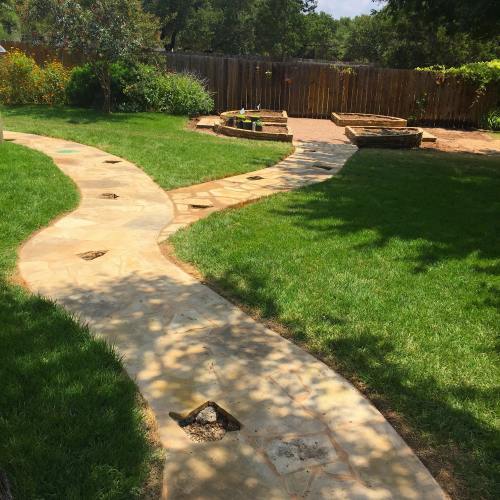
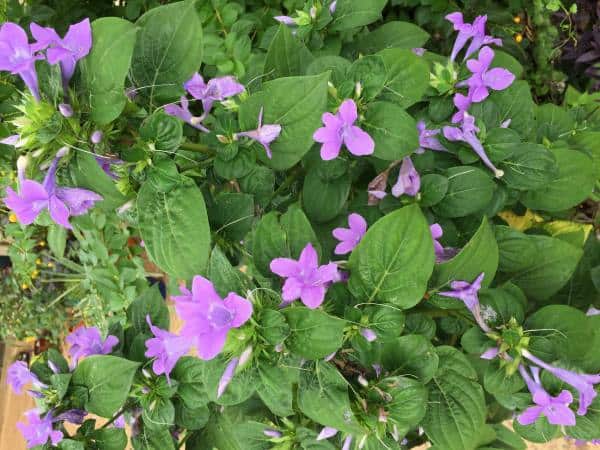 November: Fall also brought forth blooms from the newly planted Phillipine Violet, Barleria polytricha. My first experience growing this plant, it was awelcome addition to the tropical garden.
November: Fall also brought forth blooms from the newly planted Phillipine Violet, Barleria polytricha. My first experience growing this plant, it was awelcome addition to the tropical garden.